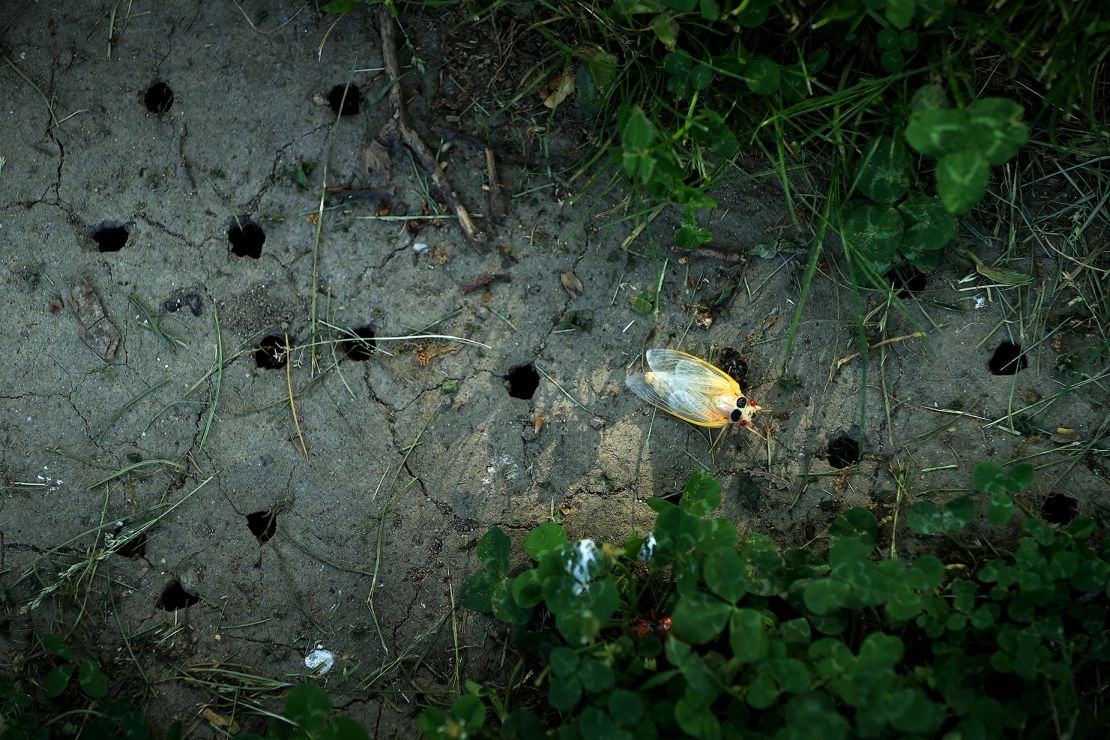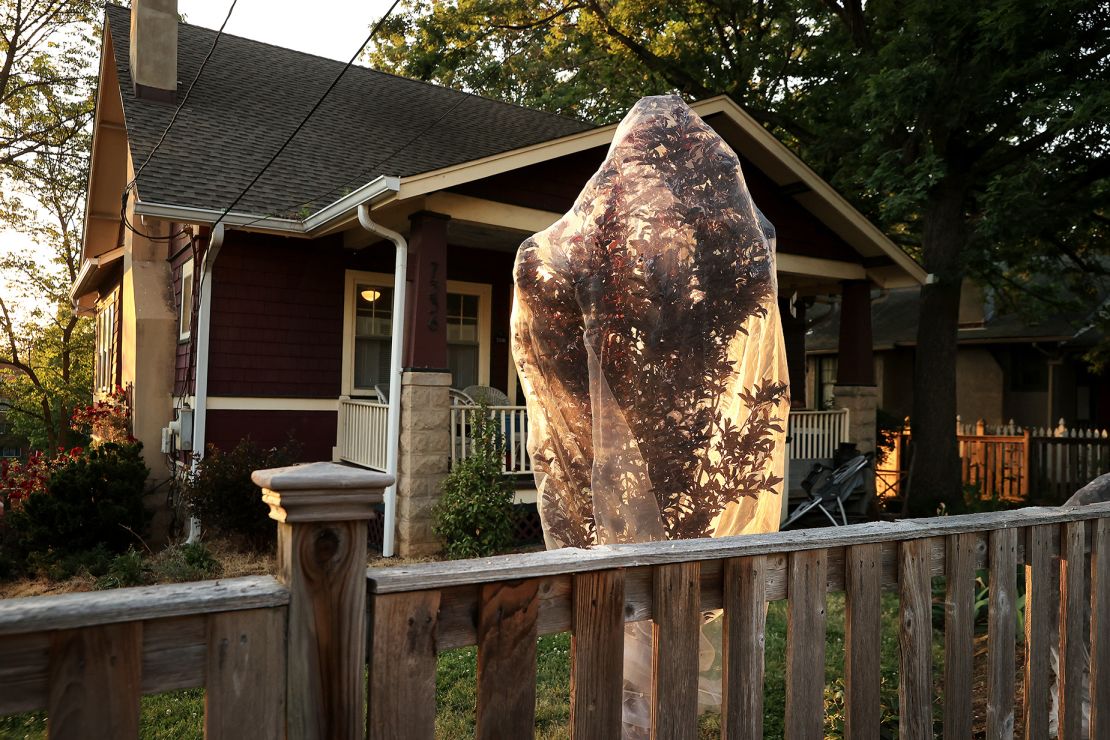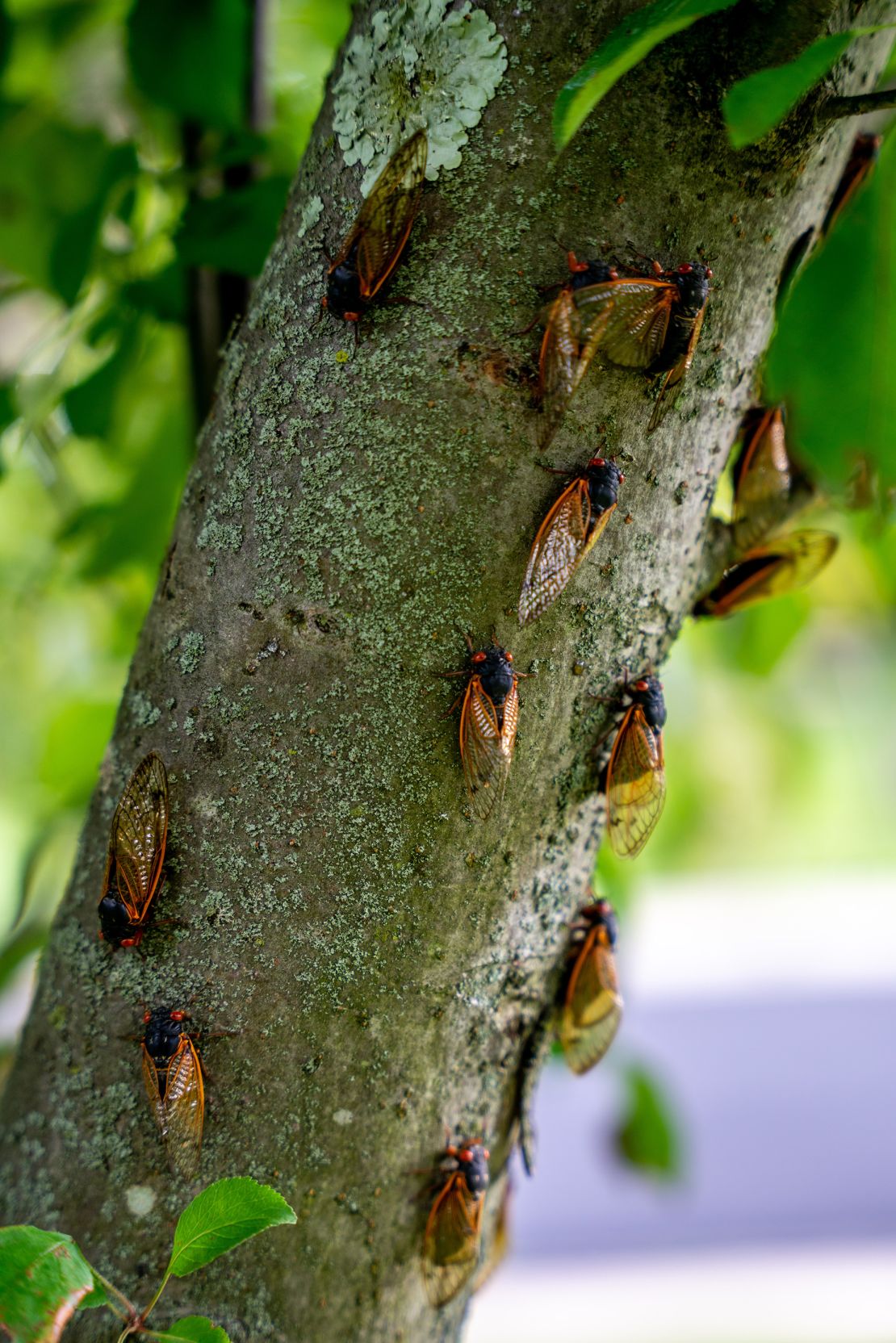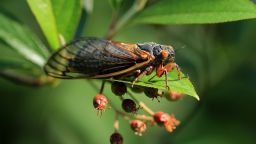Sign up for CNN’s Wonder Theory science newsletter.?Explore the universe with news on fascinating discoveries, scientific advancements and more.
A spectacular wonder of nature or an anxiety-inducing nuisance? It depends on whom you ask.
Naturalists have already spotted the first arrivals in a rare phenomenon during which cicadas will emerge this spring across more than a dozen US states — including populous areas like Chicago, Nashville and St. Louis — blanketing eastern parts of the country with billions, perhaps trillions, of the flying bugs.
The insects will infiltrate a much bigger geographical area than similar occurrences in most years because they’re part of the dual emergence of two particular periodical cicada broods. These groups of multiple Magicicada species appear like clockwork after a certain number of years, but the simultaneous appearance of these two broods hasn’t happened since 1803.
The Northern Illinois brood spends 17 years underground before emerging and is known as Brood XIII, while the Great Southern Brood, or Brood XIX, lives underground for 13 years. The two broods won’t coincide again until 2245.
Although the full-scale emergence isn’t underway yet, experts have some guidance on how to prepare for cicada season.

What to expect
When small holes that can resemble tiny chimneys appear in the ground near tree roots, it’s a signal periodical cicadas will soon emerge from their underground lair.
Once the soil hits the right temperature, around 64 degrees Fahrenheit (17.8 degrees Celsius), cicada babies, called nymphs, begin to burst forth.
As soon as they’re above ground, the bugs make a beeline for a vertical surface — typically a tree trunk, but it could be a fence. There they shed their hard outer skeletons and spread their wings for the first time before spending four to six weeks in a noisy frenzy of eating, mating and egg laying.
The most obvious sign of their arrival is the distinctive sound they make — a droning buzz. The bugs congregate in trees, and the male cicadas form a cacophonous chorus of thousands to attract?mates.
“When they say it’s as loud as a lawn mower, it is as loud as a lawn mower,” said Paula Shrewsbury, a professor in the department of entomology at the University of Maryland.
“We live near an airport, and when the planes are flying over…cicadas crank up their sound level, it’s like they’re competing with the airplanes for sound,” Shrewsbury said.

How to prepare
Female cicadas use an egg-laying organ, called an ovipositor, to lay their eggs inside slits they cut into tree branches.
However, cicadas are unlikely to cause any irreparable damage to plants, trees, vegetable patches or flower beds, said John Lill, a professor of biology at the George Washington University.
It’s possible that the insects could damage a very young sapling, and to prevent that you could cover the sapling with protective netting, Lill said.
Cicadas provide an all-you-can-eat buffet for many animals, including pets. Lill said he once had to take his dog to the vet after it gorged itself on cicadas, but the bugs — which are said to have a sweet, nutlike flavor— are not innately harmful when eaten by pets or humans.
(Some advice for the gastronomically adventurous from the US Food and Drug Administration: Humans with seafood allergies should avoid eating cicadas, which are distantly related to shrimp and lobsters.)
What to do if you hate bugs
Try to replace fear with fascination, Lill advised, and remember cicadas, which are about an inch long, don’t bite or sting.
View the dual emergence as a remarkable opportunity to see a glorious and mysterious natural phenomenon that has delighted people for centuries.

Download community science apps such as the Cicada Safari app and take photographs to help researchers studying these insects, which benefit the natural environment where they live: Cicada nymphs loosen and aerate the soil as they tunnel, and, when they die, they add nutrients to the soil.
More than 3,000 species of cicadas are found all around the globe, but just nine are periodical and, of those, seven are confined to the eastern United States.
It’s not clear why periodical cicadas evolved to emerge every 13 or 17 years. It’s an unusually long lifespan for an insect.
However, for bug haters, Shrewsbury said staying indoors or timing a vacation with the peak of the emergence might be the best strategy.
“They are so abundant. They’re flying and landing on you. They’re getting caught in your hair,” she added. “If you really are a cicadaphobe, I would plan a trip away.”





